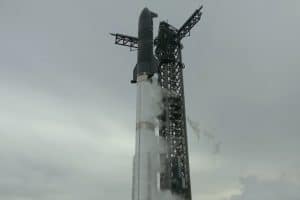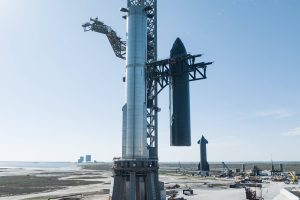- 🚀 SpaceX’s Starship and Super Heavy vehicles have been prepared for launch since early August, aiming to return the booster to the launch site.
- 🗓️ The initial estimated launch date was early August, but the new target date is now late November due to FAA delays and additional environmental analyses.
- 🌍 The delays are attributed to licensing obstacles and environmental analyses, which SpaceX deems unnecessary and based on misleading information.
- 📜 SpaceX refutes claims about environmental harm, noting the deflector’s compliance with permits and the absence of population-level impacts on birds.
- 🛂 FAA’s updated launch date was influenced by external pressure for environmental reviews, not due to new safety concerns.
SpaceX’s ambitious Starship project, designed to revolutionize space travel, has faced several hurdles related to its next test flight, initially scheduled for early August but now delayed to late November. This blog post delves into the causes of these delays, the technological advancements SpaceX plans to showcase, and the broader implications for the aerospace industry.
The Current Status of Starship and Super Heavy
SpaceX’s Starship and Super Heavy launch vehicles have been ready for liftoff since early August. The upcoming test flight aims to push technological boundaries further by attempting to return the massive Super Heavy booster to its launch site and catching it mid-air. This bold maneuver, if successful, will signify a major leap in reusable rocket technology, reducing costs and making frequent space travel more viable.
Navigating the Maze of Regulatory Delays
The delay from August to November has been attributed to a series of regulatory and environmental challenges, primarily involving the Federal Aviation Administration (FAA). Despite having received an initial launch license estimate for mid-September, the launch has been postponed to November. This decision was driven by a “superfluous environmental analysis” rather than any new safety concerns. SpaceX argues that these additional reviews were influenced by misleading reports and undue pressures from specific interest groups, rather than based on substantial environmental risks.
Environmental Concerns: Fact vs. Fiction
SpaceX has actively challenged accusations regarding potential environmental harm, such as the operation of its water-cooled steel flame deflector. The company insists it has complied fully with permits and environmental regulations and that any claims to the contrary lack credible scientific backing. For instance, they emphasize that their operations have had no known negative impact on local wildlife populations, a fact supposedly confirmed by ongoing environmental assessments.
The Role of the FAA
The FAA’s increased scrutiny and subsequent delays reflect broader challenges within the regulatory environment for aerospace companies. The regulatory body’s actions have been influenced by demands for comprehensive environmental reviews, as opposed to clear safety issues. This situation underscores the complexities private space companies face, balancing technological innovation with compliance in a stringent regulatory landscape.
Technological Innovations: Catching the Super Heavy Booster
A significant highlight of the upcoming test flight is SpaceX’s ambitious plan to catch the Super Heavy booster. This objective not only showcases SpaceX’s engineering prowess but also aims to set new standards in launch vehicle recovery operations. This undertaking highlights the intricate choreography and precision required to achieve such a feat, involving advanced tracking systems and guidance technologies.
Implications for the Future of Space Travel
SpaceX’s endeavors in overcoming environmental and regulatory challenges reflect broader trends in the aerospace industry. Success in these areas not only advances SpaceX’s mission to make space travel more accessible but also sets a precedent for handling regulatory challenges. The lessons learned from these experiences can inform future aerospace projects, emphasizing the need for efficient regulatory processes that balance innovation with environmental and public safety concerns.
The Road Ahead
While the delays in the Starship program are certainly frustrating, they also serve as a reminder of the complexities involved in pioneering new technologies. As SpaceX navigates these obstacles, the coming months will prove pivotal not only for the company but for the entire aerospace industry as it anticipates breakthroughs in space travel capabilities.





